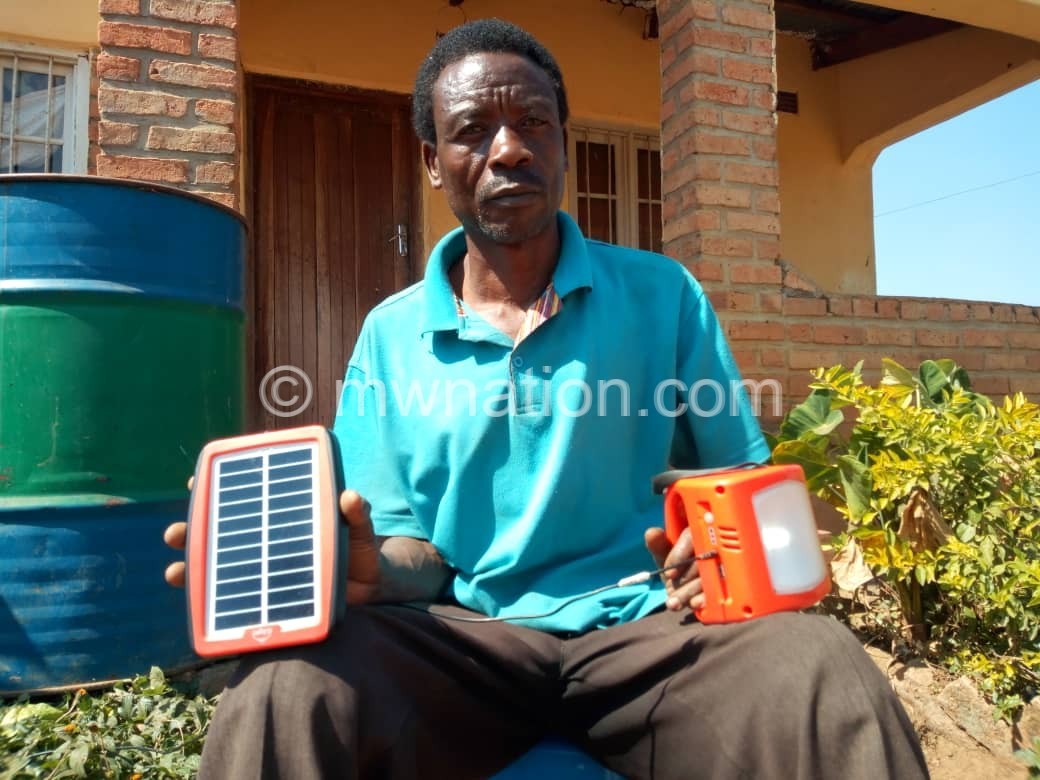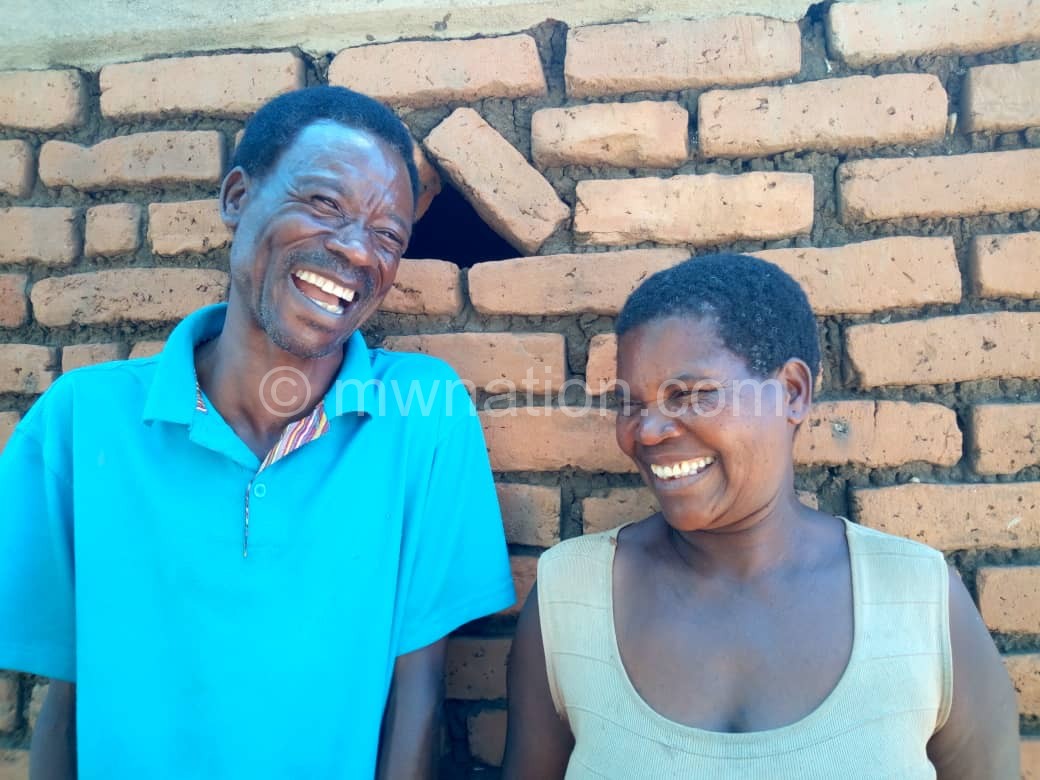Solar lamps banish paraffin fumes
A small solar panel and lofty antennae on a rooftop ridge gives a glimpse of a future Yohane and Virginia Chaoloka visualise when they leave their home and go farming.
“We need power to keep energetic people in rural areas instead of fleeing to town where jobs are few,” says Yohane, from Chimtengo in Dedza North.

The village is a food basket without electricity, but the K18 000 solar system gives the Chaolokas light and power to watch television just like townspeople.
“We love farming, but we don’t miss much. We follow news, charge our phones and hardly sleep in the dark,” he says.
This is not common in rural settings, where eight in 10 Malawians live.
Leaving no one behind is the catchphrase of the Sustainable Development Goals (SDGs) to end poverty by 2030, but almost 95 percent of rural Malawians bear impoverishing impacts of lack of electricity.
The seventh goal of the global agenda President Peter Mutharika and world leaders adopted in 2015 calls for access to affordable, reliable, sustainable and modern energy for all
Chimtengo Village, reached by a bumpy road, is beyond the reach of Electricity Supply Corporation of Malawi (Escom).
They join roughly one billion people—about 13 percent of the world’s population—who live without electricity, according to the 2018 Energy Progress Report.
The report, unveiled last month at the Sustainable Energy for All Forum in Portugal, shows the world is not currently on track to meet SDG7 targets.

But the Chaolokas’ count on simple sun-powered technologies that lessen the suffering of people who grope in the dark after sunset.
Two solar panels—one nailed atop their three-bedroomed home and another basking in the sun on the veranda—help them overcome energy poverty.
“To some, K18 000 is change, but the solar panel gives us the power we need. After tending to our crops and livestock, I’m at home watching TV with my wife,” says Yohane as Virginia smiles coyly.
In Chichewa, Chaoloka means “an overcomer of a big divide”. The couple has surmounted a familiar energy gap that further pushes poor Malawians into poverty.
“With a simple solar system, we live happily and no longer endure coughs caused by candle and paraffin lamps. Thanks to the sun, we spend more time farming instead of being bedridden,” says Virginia.
These affordable solar systems, mostly made in China, are on sale in both urban and rural markets.
They have weaned communities from using smoky kerosene lamps for lighting.
The main winners are rural dwellers. According to world Bank, only five percent of them have electricity.
The gadgets are also handy for urban households. About 25 percent of them are connected to the grid marred by frequent and protracted blackouts.
Drought in southern Africa and low investiment in the energy sector have almost halved the 350 megawatts generated by on the Shire River.
Those frustrated by power rationing, with townships going over 12 hours without electricity, are also turning to the low-cost solar systems for some relief.
A shopkeeper who sells these solar gadgets at Linthipe Trading Centre terms them msunga banja—a keeper of families in the dark.
A vendor at the heart of LimbeMarket in Blantyre explained: “Many people buy from me because they are guaranteed lighting without worrying about smoke, foul smells and high costs as is the case with candles and paraffin lamps.
“However, some prefer torches powered by dry cells because they cost less than solar torches. Solar gadgets look expensive, but they are cheaper in the long run. You don’t need to buy new battery now and again. If the sun is shining, you won’t sleep in the dark.”
The influx of these simple renewable energy solutions has pushed paraffin out of business.
None of almost 10 service stations between Blantyre and Dedza sells paraffin anymore.
The old stations have either abandoned or uprooted paraffin pumps. New ones are emerging without any. The future points towards extinction of polluting fossil fuel for lighting.
However, the uptake of renewable energy solutions has been uneven.
They need to become widespread for SDG7—universal access to electricity for all—to be met by 2030.
According to Sustainable Energy for All chief executive officer Rachel Kyte, the bulk of the unreached billion lives in sub-Saharan Africa and South Asia.
“The urban-rural chasm in access remains wide, with almost 87 percent of the world’s population without electricity living in rural areas. However, off-grid solar solutions, ranging from solar home systems to solar mini-grids, are emerging as an important driver of rural energy access,complementing grid electrification in some cases,” she says.
Interestingly, the low-cost solar lamps and panels are ramping up the appetite for renewable energy from the sun.
“For now, I use a torch powered by dry cells. With this, I no longer worry about my house catching fire as was the case with candles and paraffin lamps. My family no longer suffers from persistent coughs and sneezes. We have said bye to smoky lamps and paraffin smells. I wish we had a solar home system to stop buying batteries every week, but we cannot afford it.”
To Chaolokas, the cheap lighting system is just a first step.
Says Yohane, a dairy farmer: “When we sell milk, maize and soya, we save some money. We won’t stop saving until we get a bigger solar system which can run a refrigerator day and night.”





